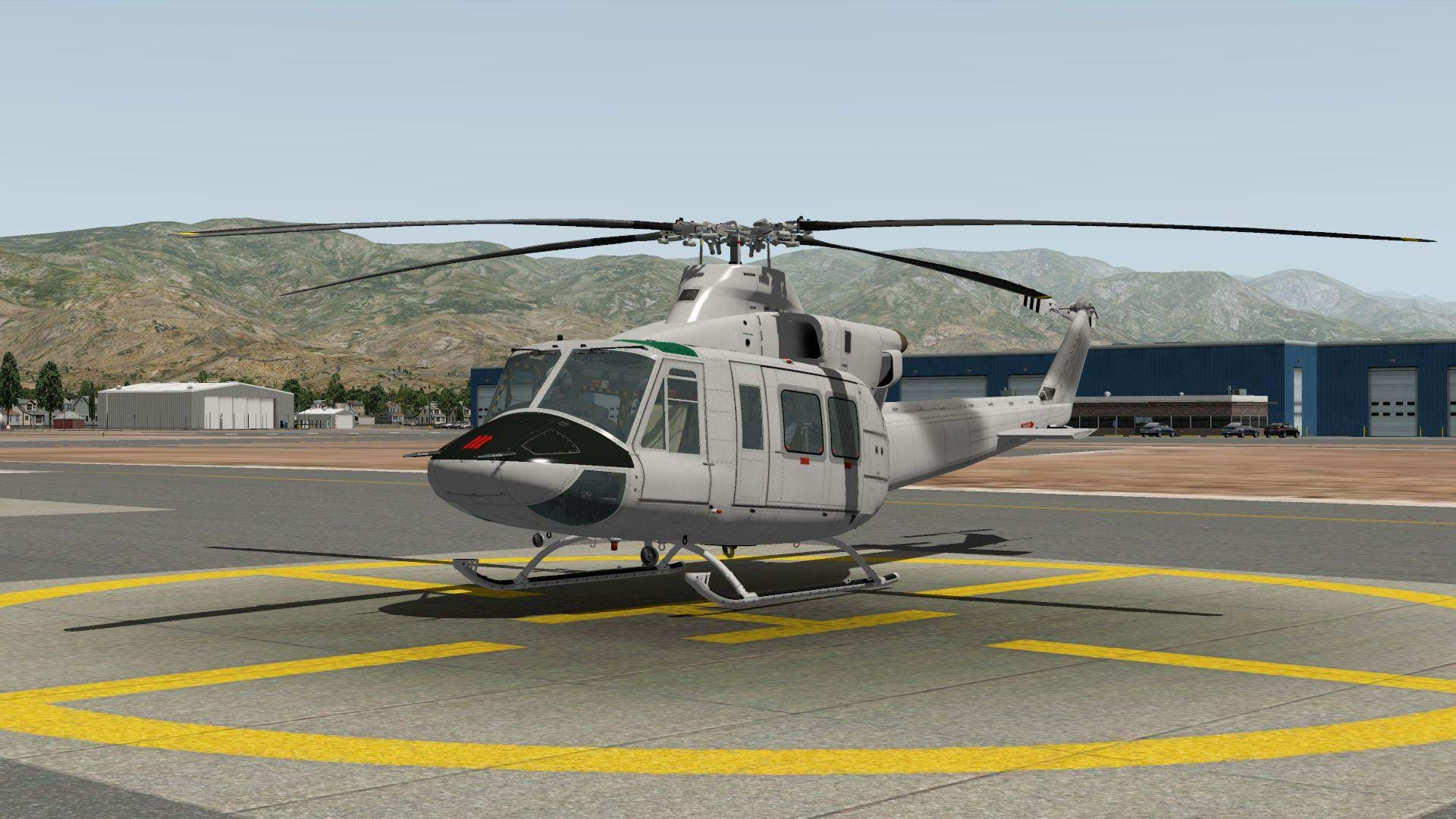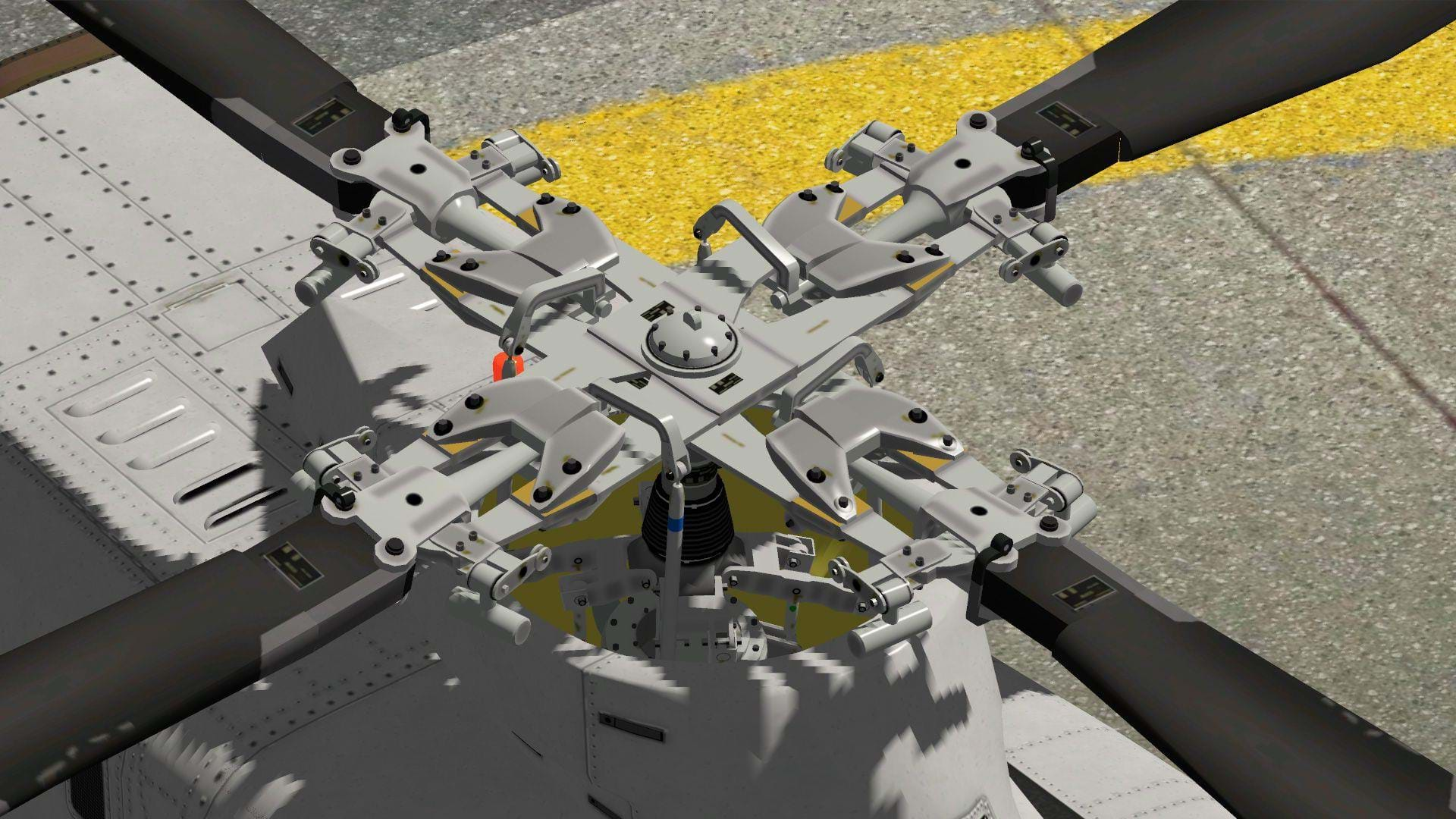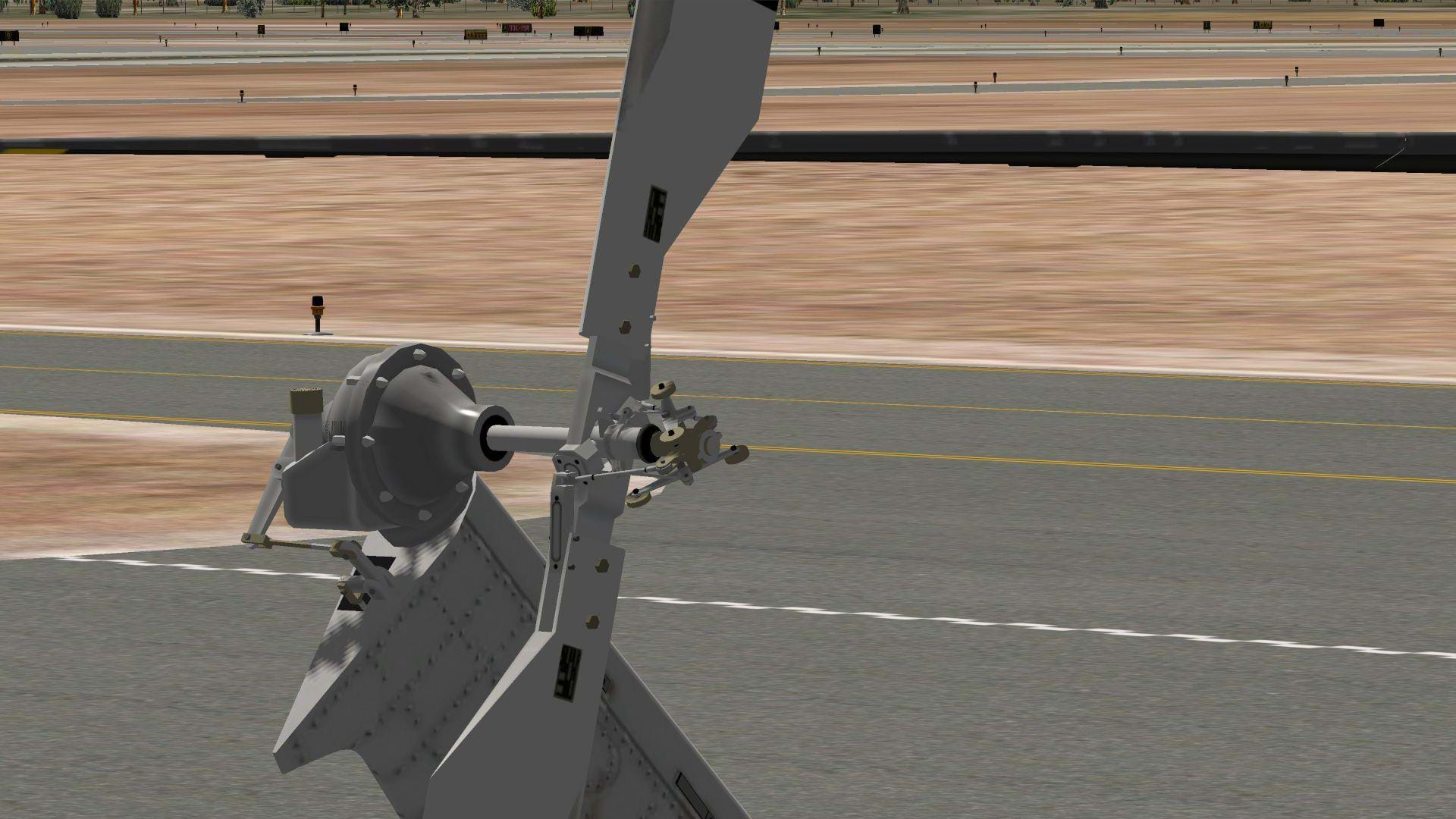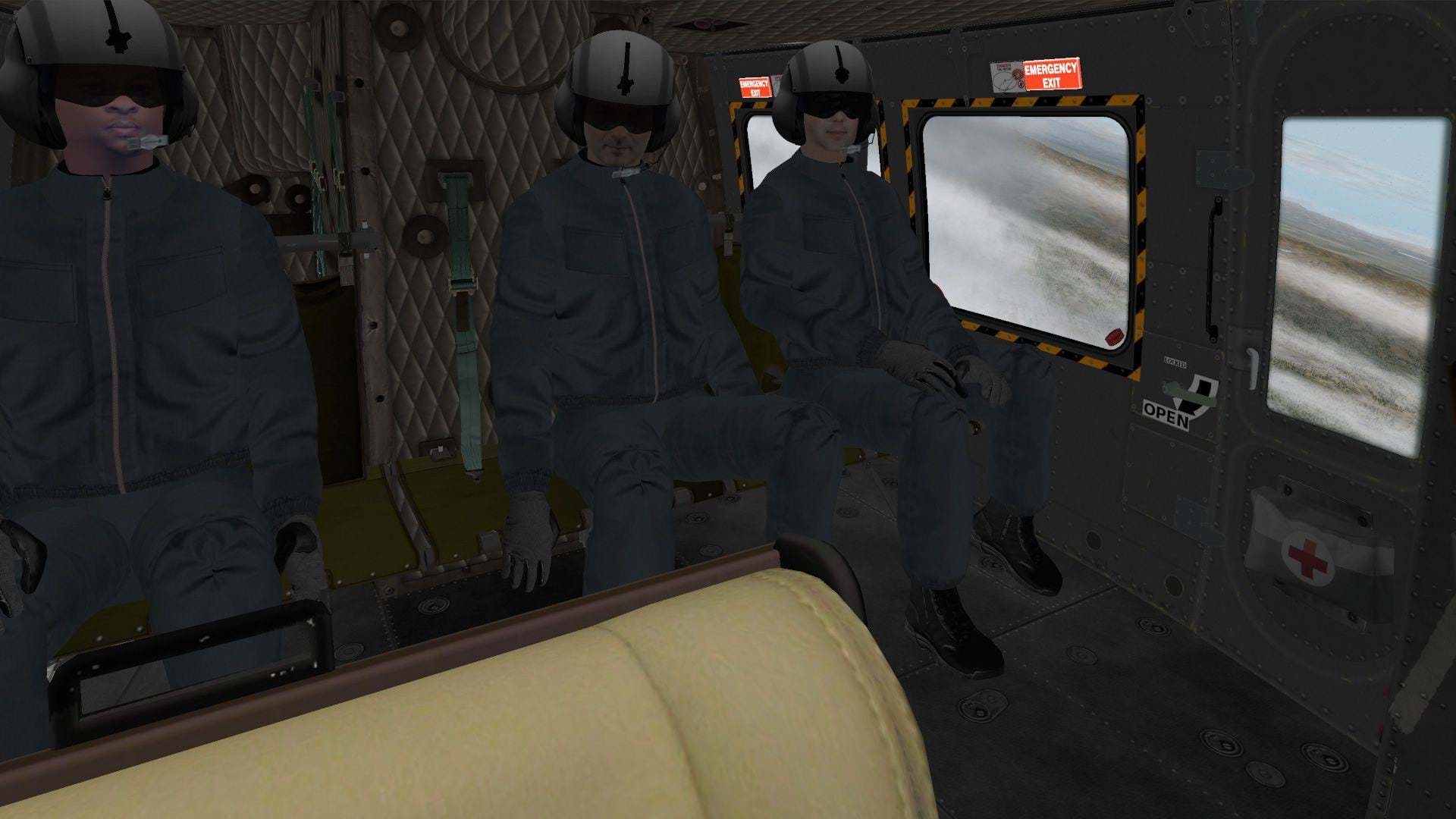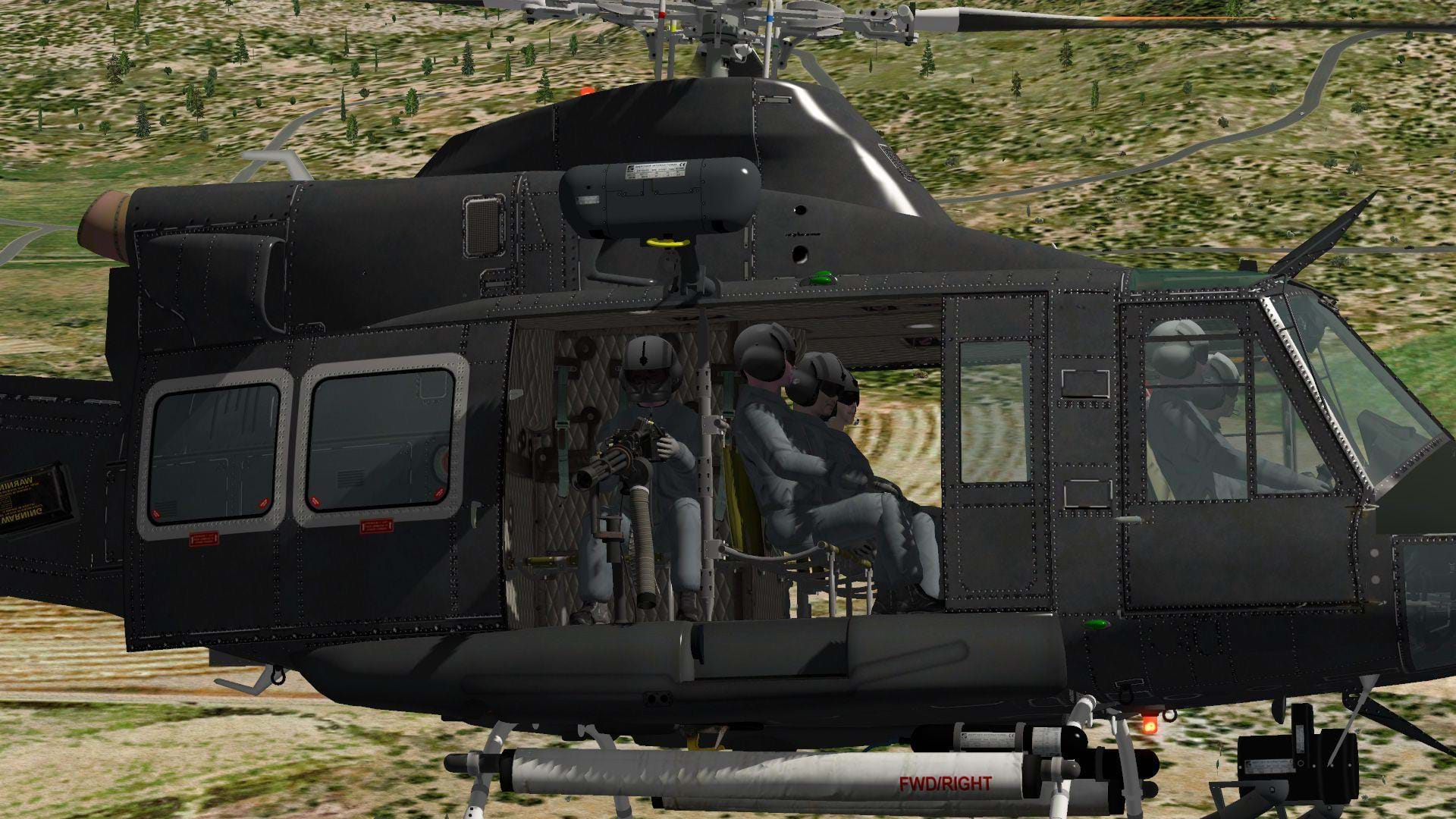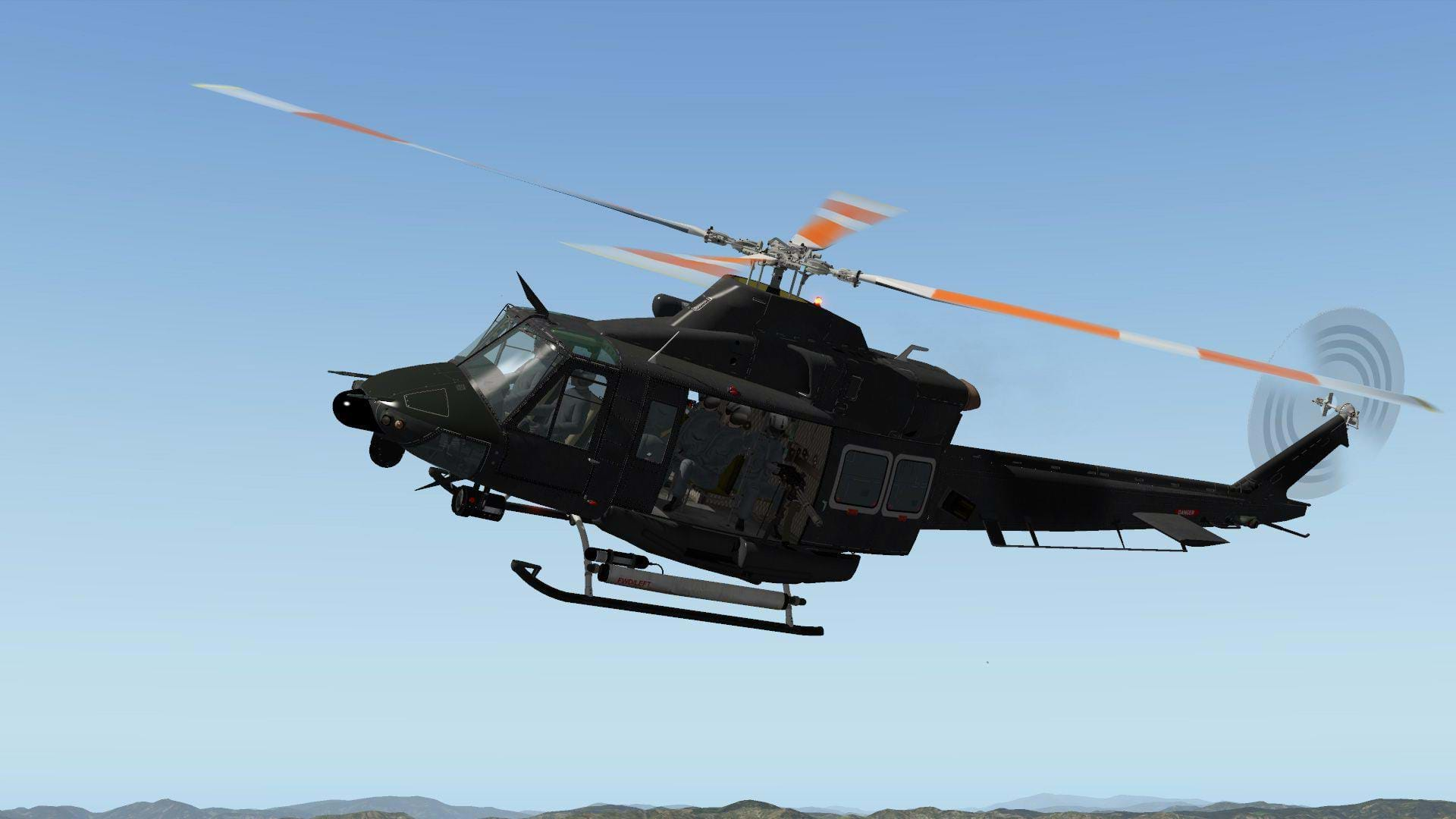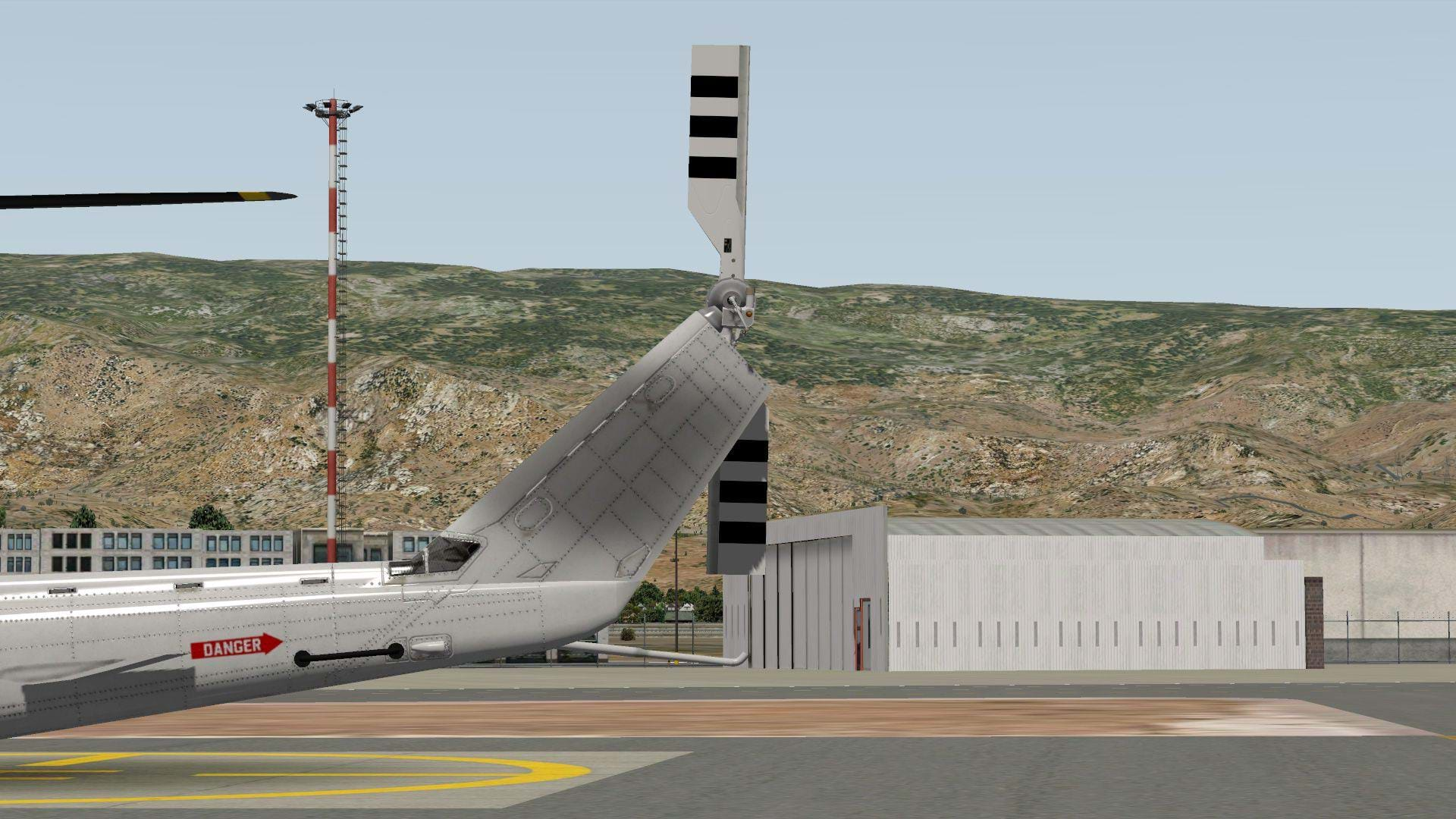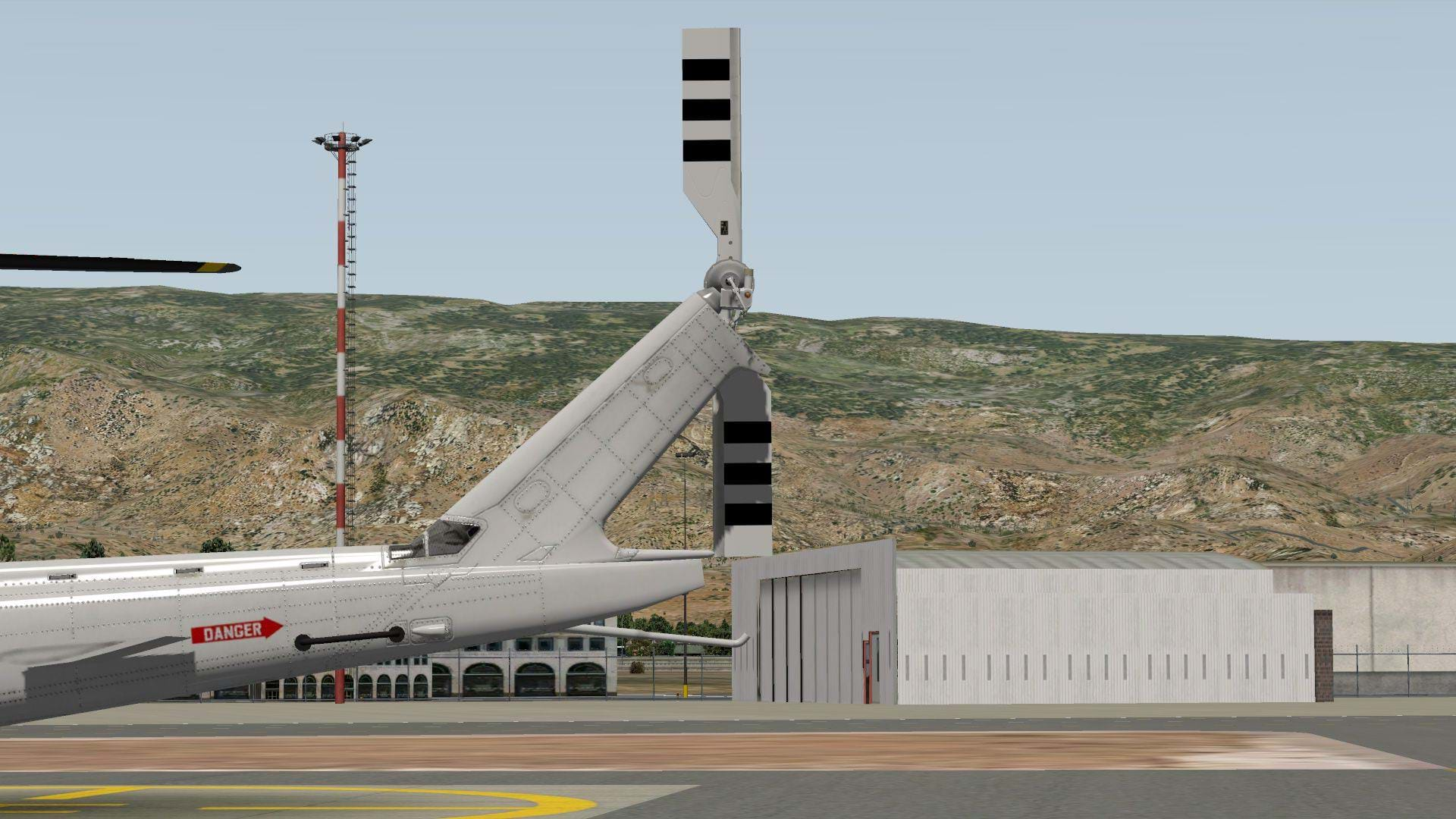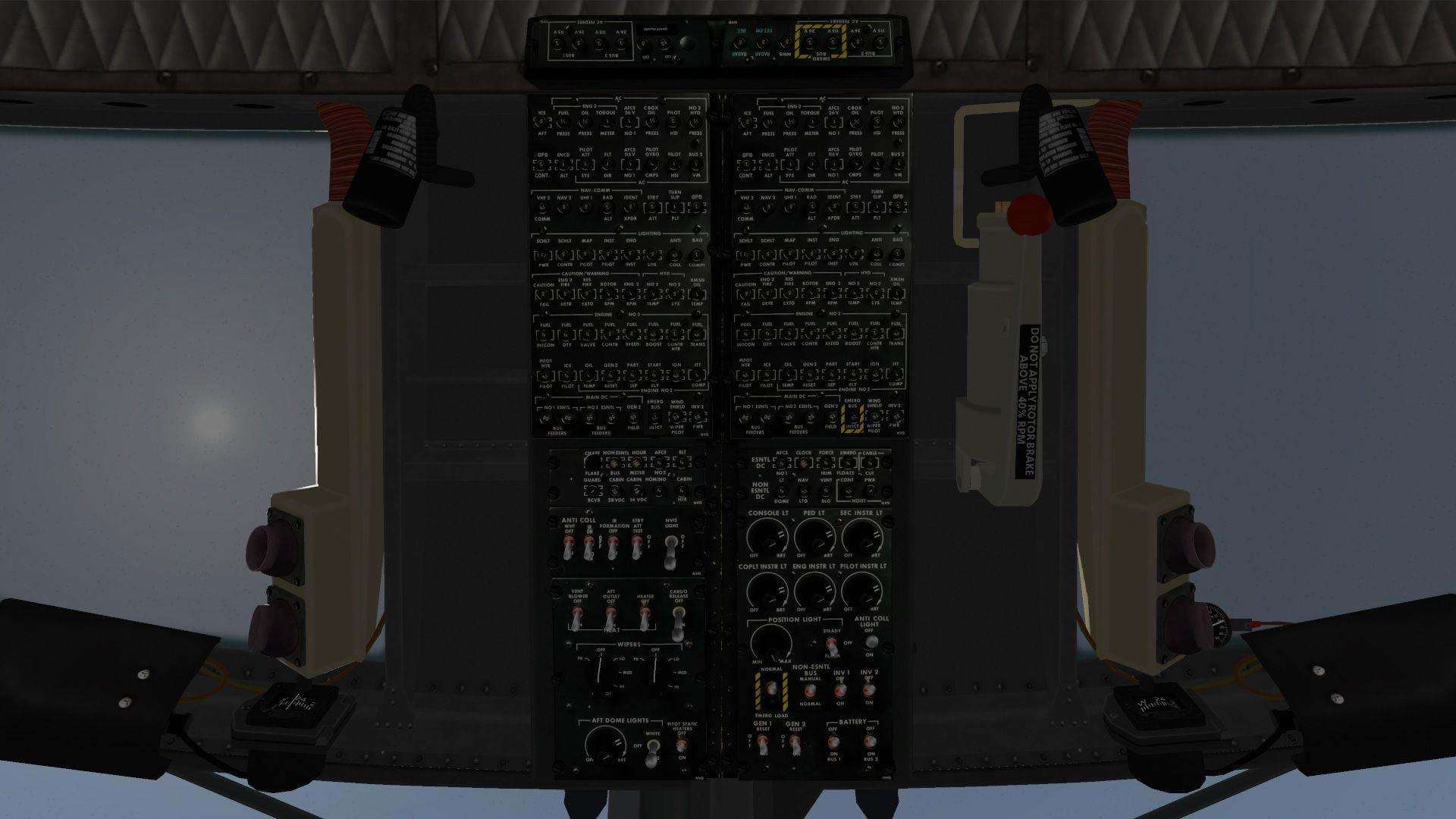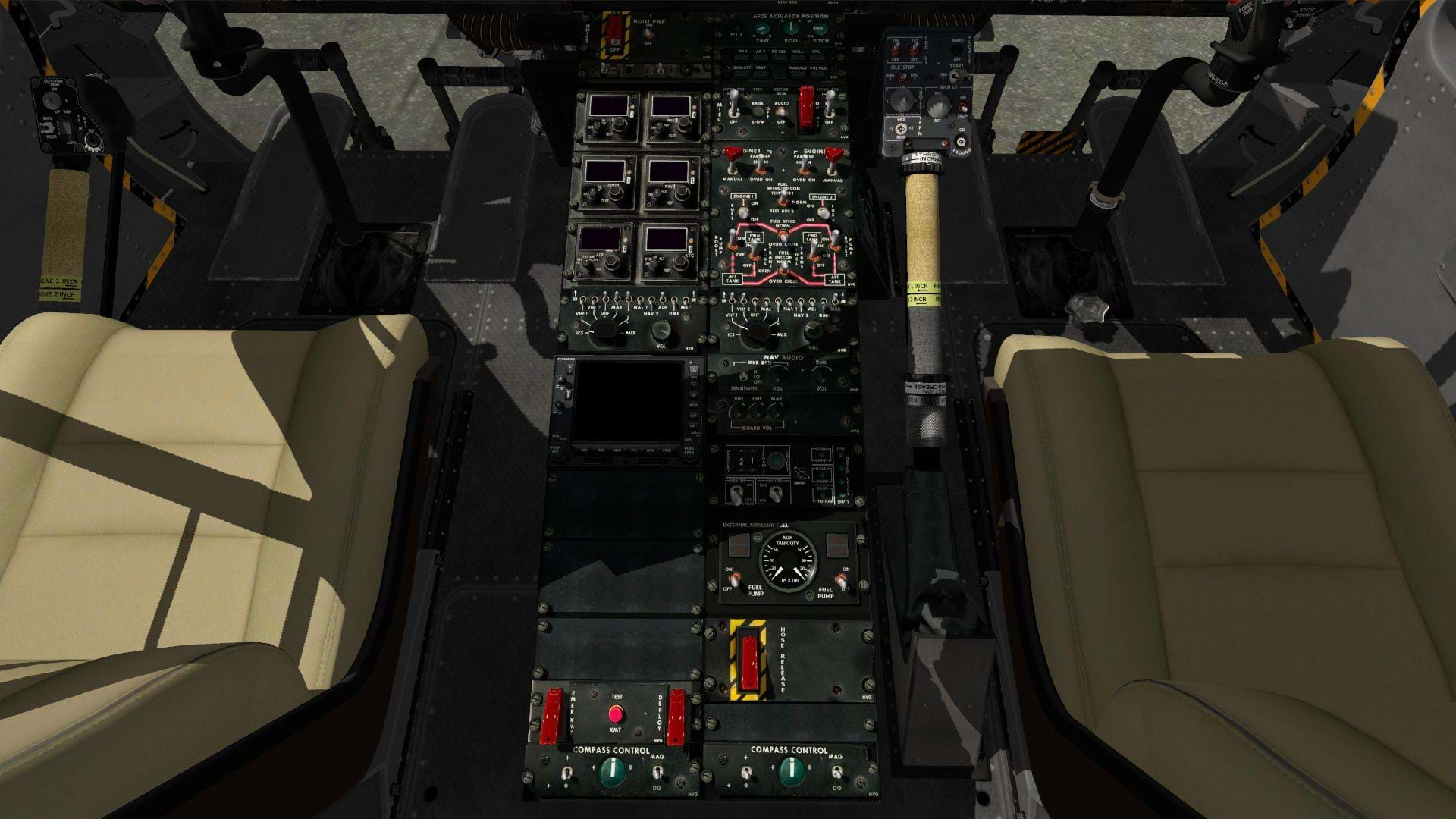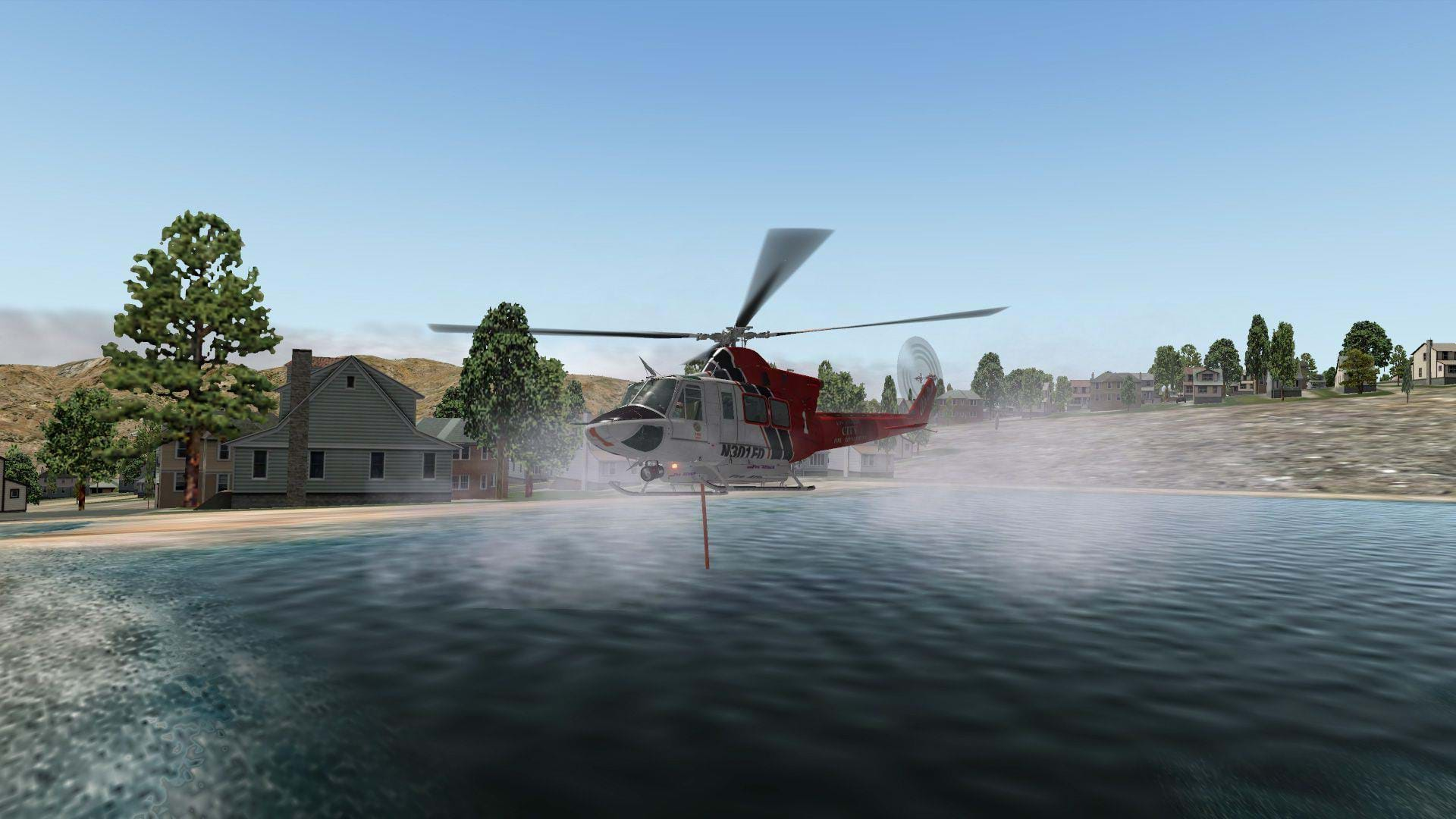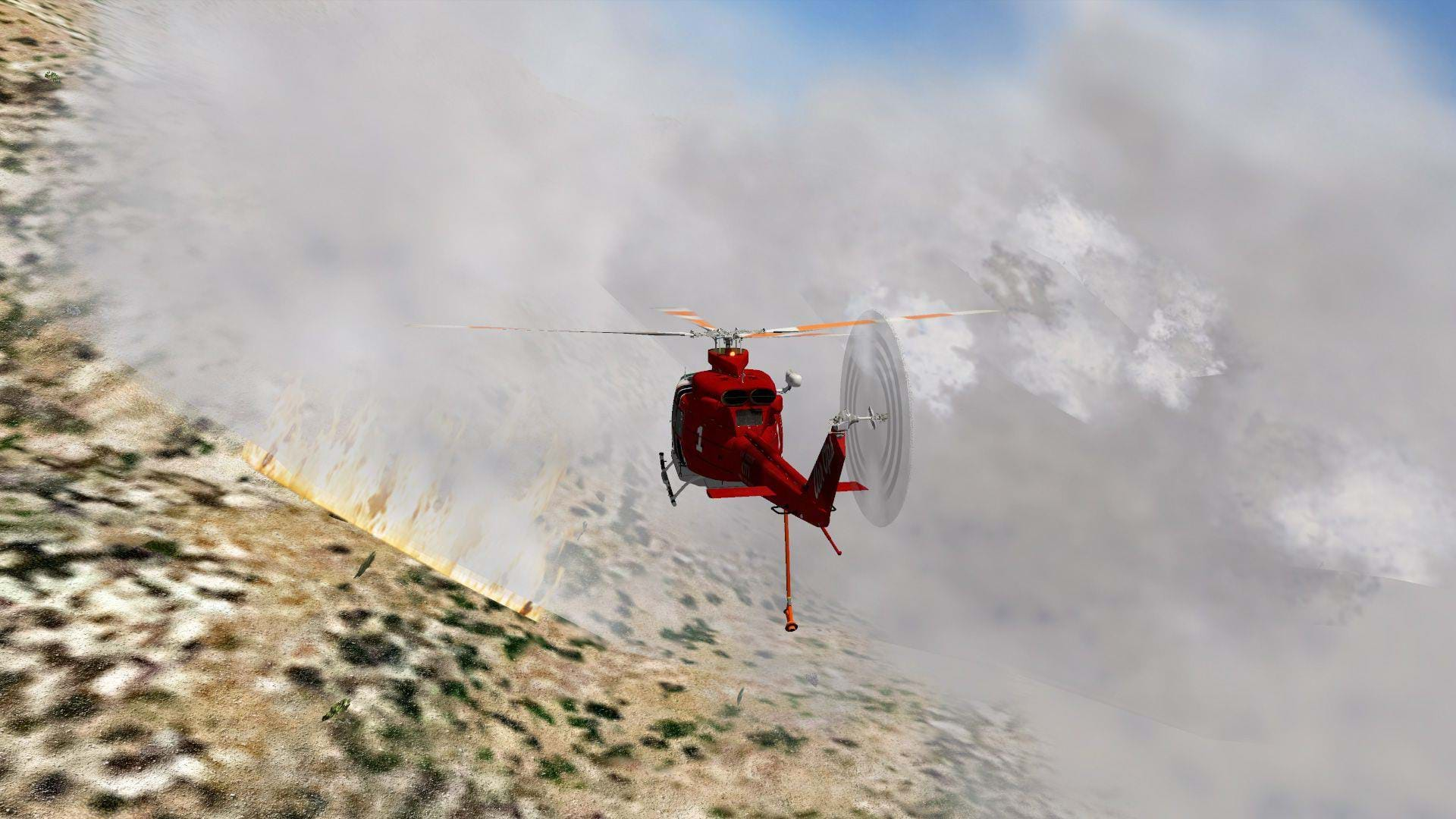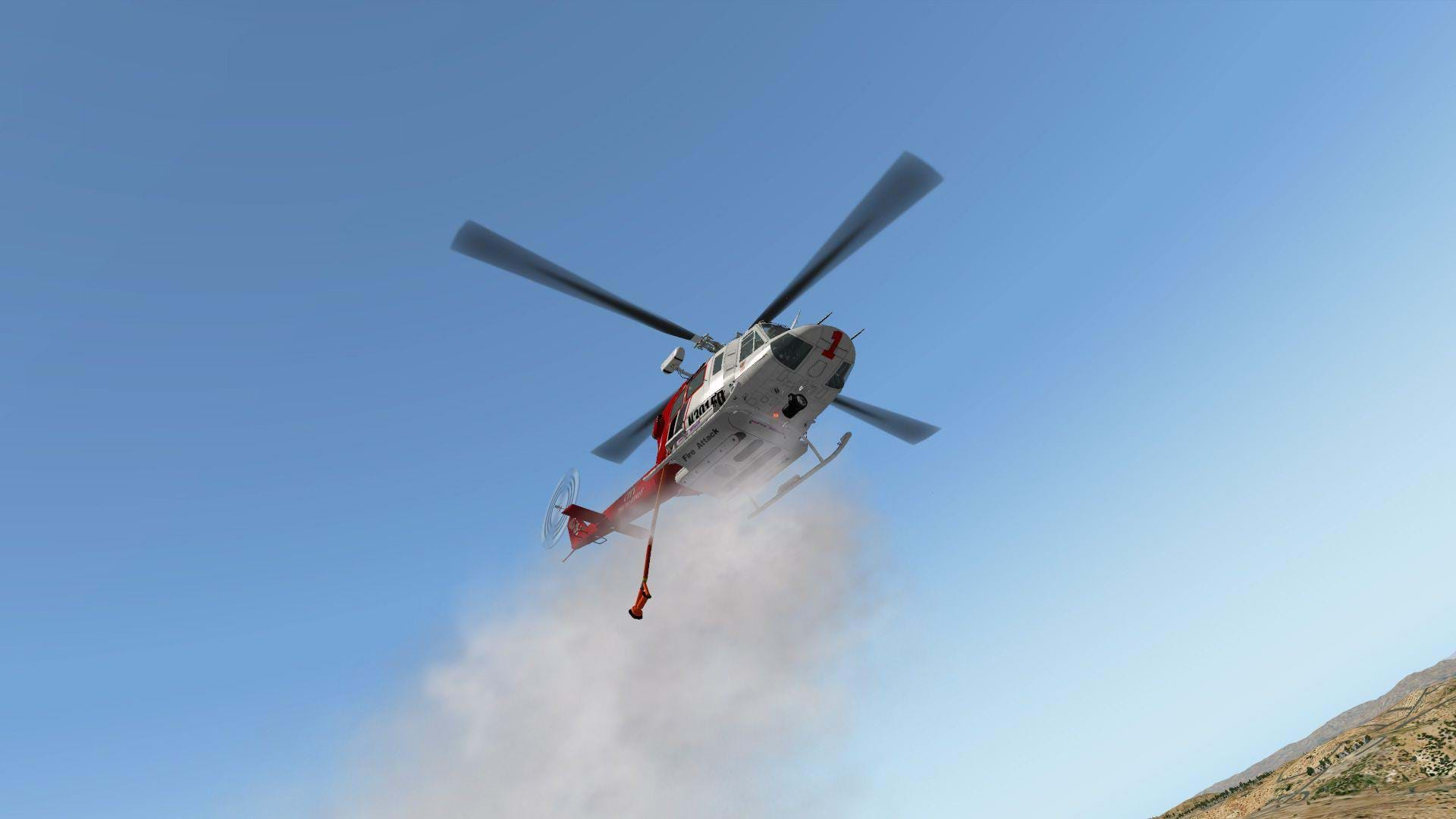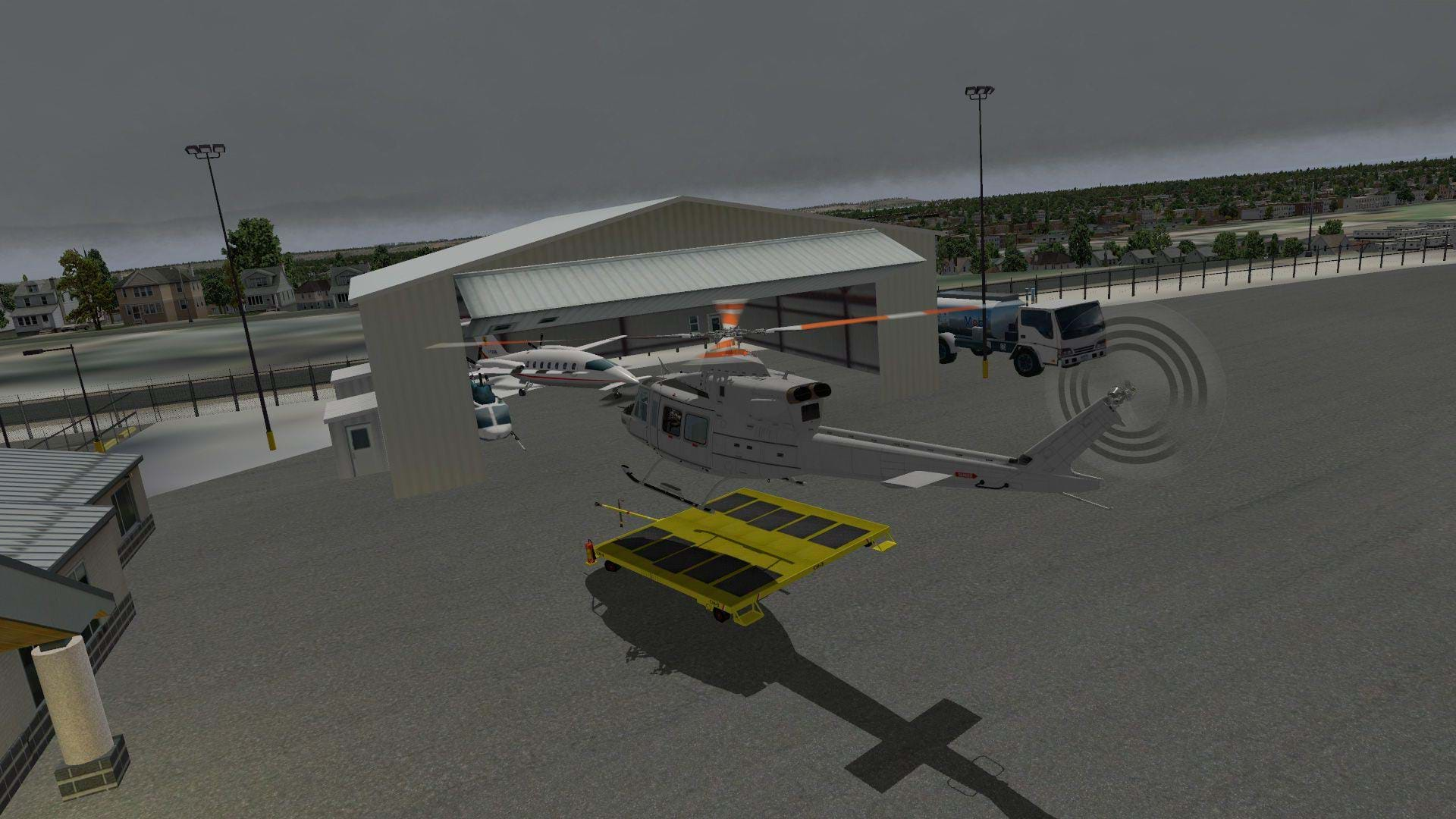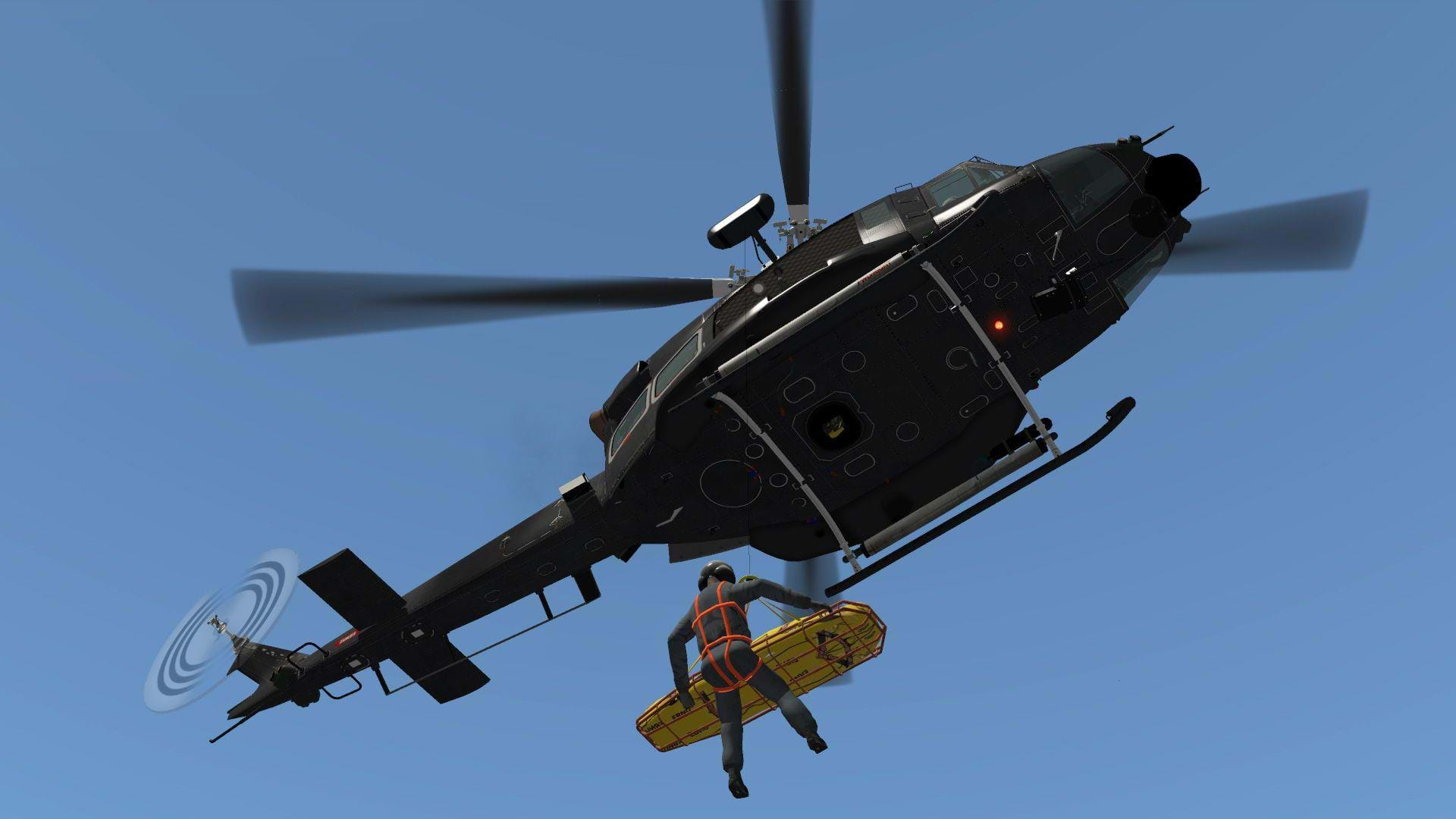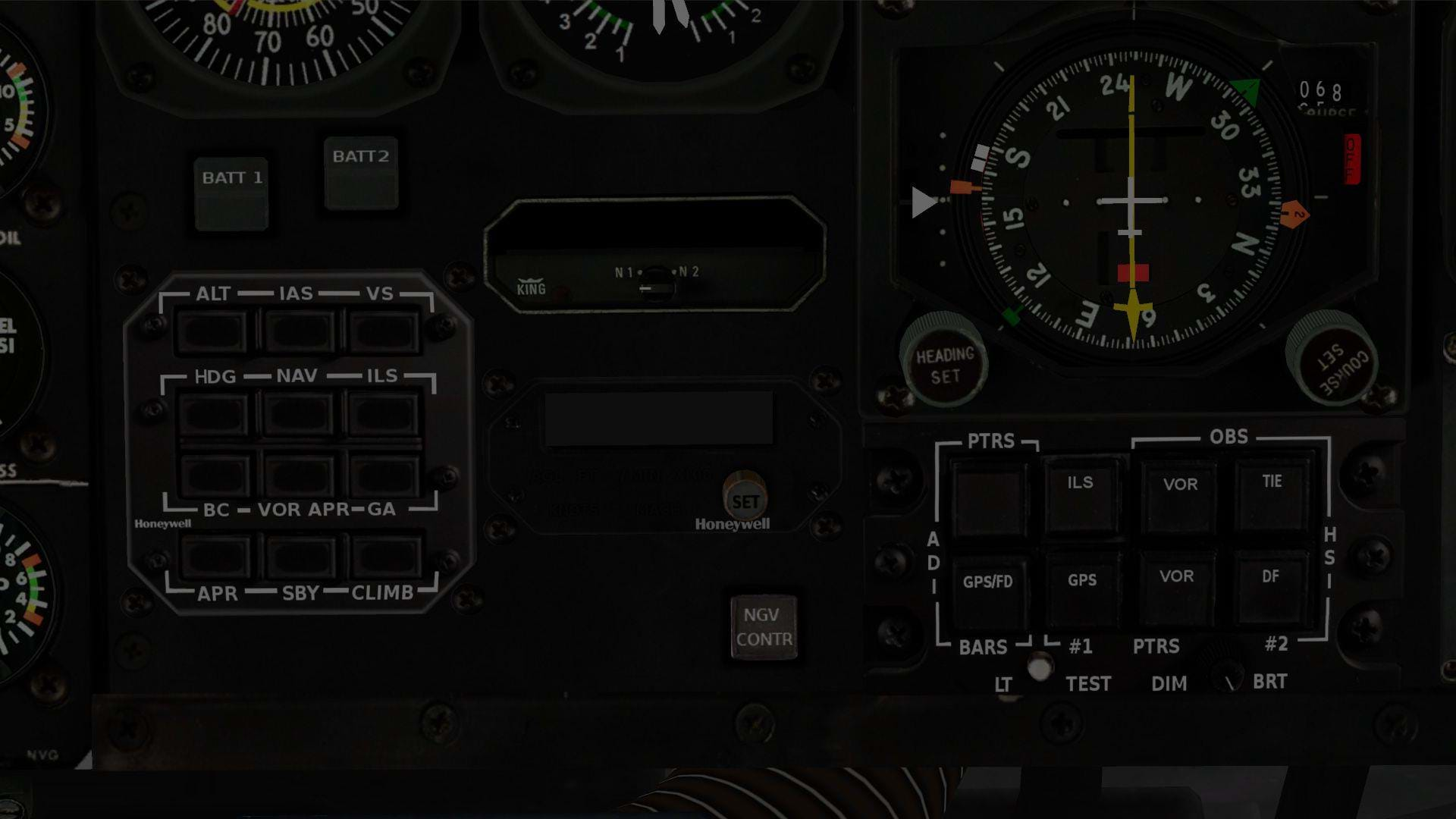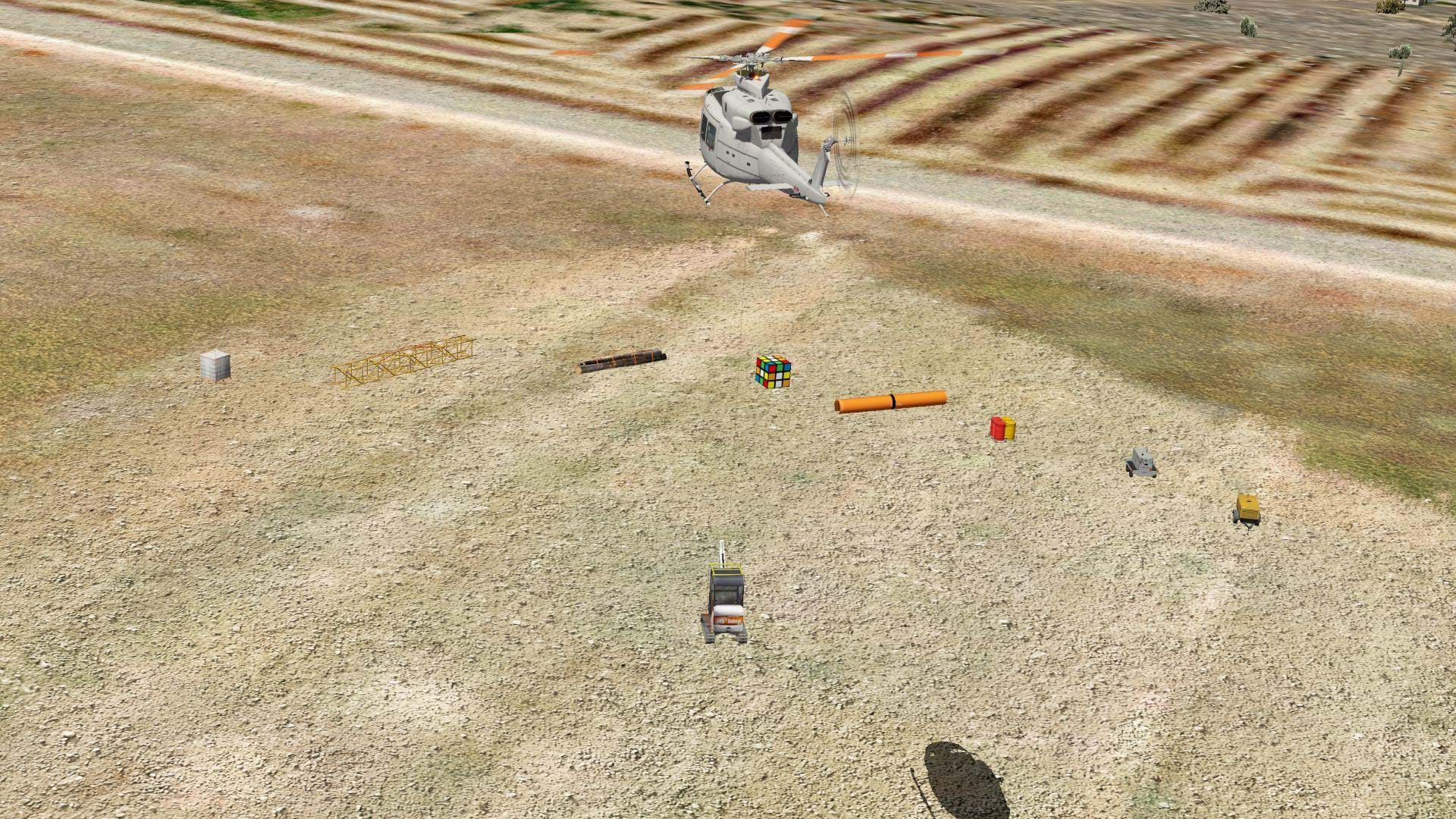Installation
The X-Trident Bell 412 is just as easy to install as any other X-plane aircraft. If you can move one folder to another. There’s a good chance you can install this aircraft with no issues.
First Look
The X-Trident Bell 412 is has a very well done visual model. It’s external base model is easily on par with, if not a little better than Cera Sim's 412.
You won’t get super reflective, glossy textures, but that’s almost the norm for X-plane. This isn’t necessarily a bad thing in my opinion. A lot of people really like that, but in all reality, most workhorse helicopters aren’t very glossy.
The main and tail Rotor heads are presented very well. X-Trident took care in showing the soft-in-plane; flex beam rotor system with all of its individual parts including the two hub yokes that perpendicularly overlap each other forming the rotor hub. I particularly appreciated their attention to the rotor blade connections. The Bell 412 has the option to mount each rotor blade to the rotor hub by either two fixed diameter bolts, or one fixed diameter bolt and an expandable bold on the trailing edge. The X-Trident 412 uses the fixed/expandable combination which isn’t the most common configuration that I have seen here in the U.S., but it is an accurate one and I thought this was a nice touch.
The entire rotor system is animated quite nicely. There is even an option for a rotor demo mode, which slows down the animation of the rotor system so the user can observe the cyclic and collective feathering of the rotor system. I first saw this rotor demo mode on a MD500 model for X-plane 9 a while back. I don’t know if it’s the same plug in used back then, but it certainly looks good on the B412 and allows you to see this complex rotor doing its thing in flight.
When it comes to the options available for the external model, the X-Trident model proves itself to be much more versatile than any other B412 on the sim market. A nose radome for a functioning weather RADAR, FLIR camera, movable search lights, functional external fuel tanks, and multiple options for skid floats are just some of the options available. Most of the paint schemes available feature at least one example of each of the options. It’s also very easy to do your own paint jobs with the easy to use paint kit.
If you want to customize your own B412, X-Trident allows you to do this relatively easily. It doesn’t have an on aircraft clickable menu like the DreamFoil Bell 407, which is a shame, but you can add and remove crew members, your co-pilot, a medical patient and door gunners on the go. For other changes to the exterior model, you have to do a little more work outside the sim.
Each paint scheme comes with a configuration file located in its individual folder. It that file, is a list of the additional equipment that is “installed” on that particular aircraft. The model also comes with a quick reference guide in PDF that gives you all of the available add-ons and options for your aircraft. By simply typing in the feature that you want from the list in the PDF (I copy and paste it) into that aircrafts configuration file you can add or remove certain external features to your own B412.
The X-Trident AB-412 is the only Bell helicopter model available on any platform that I know of that features the Fastfin Option on the tail. Now, to be clear, it doesn’t have the entire Fastfin system (tail boom streaks), but it does give you the option to apply it to the vertical fin of the helicopter which is pretty good looking. However, as far as I can tell, it doesn’t provide any increase in performance or tail rotor authority.
The interior model of X-Tridents B412 is very well done. It’s on par with, if not a little better, than any other medium sized helicopter in X-plane 10 or FSX. Almost all of the switches are functional, but none of the circuit breakers are which isn’t that big of a deal in my opinion. All of the switches needed for normal and extended flight operations are clickable which is what should matter to most casual users.
Sounds
X-Trident does a pretty good job of capturing the sounds of the 412. I doesn’t sound exactly like the 412’s I’ve spent time around, but it’s pretty close. Power and Rotor RPM changes are clearly detectable during takeoff, and especially during practice autorotations. This model doesn’t benefit from the DreamEngine plug-in like some other X-plane models, but it still manages to give the user a pretty decent sound experience.
Systems
The systems modeling of the B412 takes full advantage of the permissive simulation environment X-plane 10 provides. This model comes with a separate TXT. File checklist that you can print out in kneeboard size for use. Cold and dark starts with the checklist isn’t hard, but might take some searching around for the right switch, if you’re not familiar with the cockpit layout.
The electrical, fuel and navigation systems are all pretty well modeled. You’ve also got the option to do GPU starts. It’s also got a pretty in depth flight Stabilization system that we’ll talk about In more detail later on in the review.
A lot of the fun with this model comes from using the different configurations. My favorite is the belly mounted fire attack water tank. It features a snorkel for refilling in flight from any X-plane water source if it’s deep enough. If you’re a strict Helicopter simmer like me, up until now, you’ve never had a reason to use the forest fire option on X-plane 10, well now you do! You’ll notice as you take on water, not only does the water level indicator in the cockpit rise, but your torque requirement to maintain your hover altitude also increases as the ship takes on water. Once the tank is full you can take off, fly to where ever X-plane has started the fire, and dump water on it until it’s out.
The external auxiliary fuel tank option is very useful for long flights. Its control panel is located on the center console along with the auxiliary fuel quantity gauges. As with most external or auxiliary fuel storage systems, the fuel is transferred to the main tanks to be used by the engines. The X-Trident B412 models this function very well.
This model also comes with the ability to “spawn” a few items that would make you virtual experience a little more fun. The drop down menu in the plugins section of X-plane, you can place a helicopter dolly directly in front of, or directly below the aircraft in flight so the user can land on it. While on the ground, the dolly can be placed directly underneath the aircraft for dolly take offs. The dolly will also stay there for landings after your mission is complete.
Through the SAR control panel, the user has the ability to place a medical patient anywhere he or she likes using GPS Lat/Long coordinates for simulated search and rescue operations on the fly in the sim. This is a pretty neat feature that I haven’t seen in any other Sim. The rescue hoist is functional and controlled from the SAR control panel. You can raise and lower it with or without the rescue worker and litter attached.
This model also comes with a fully functioning auto pilot, which we’ll discuss more in the next section of the review.
Flight Dynamics
As always, I’m very careful when describing the flight characteristics of a desktop simulator model. Especially one I’ve never flown in real life. This will be no exception.
There is a common misconception in the helicopter flight simulation community. I’ve seen it in many forums I’ve visited, and is seems to be a common thought that if a flight model is too easy to fly, then it must not be realistic. Well, generally speaking, if we’re talking about a light single engine aircraft with no stabilization system that is likely to be true. In this case however, being easy to fly isn’t necessarily an indication of lack of realism. Now let’s talk about why.
Most modern medium sized twin engine helicopters are designed to be easy to fly, and there is good reason for this. The missions these helicopters are built for and are expected to perform demands a lot of attention from the flight crew and often take them into instrument meteorological conditions. So with all this in mind, many of these ships have some sort of flight stabilization systems built in, or are capable to have it added on later. These stabilization systems are often accompanied by a multi axis autopilot as well. This is necessary to reduce the pilots work load, so he or she can dedicate more of their attention to the mission at hand.
If you’re accustomed to flying the AS350, B407, R22 or any other light single engine helicopter in X-plane 10, you might be a little surprised by the perceived lack of torque effect when picking this aircraft up to a hover for the first time. Very little, if any left pedal is required to maintain heading. This is not an uncommon event for an aircraft with a somewhat modern flight stabilization system. These systems aren’t often found on smaller aircraft because they’re expensive, and often not necessary. Also, for a helicopter to be certified for single pilot IFR flight, some sort of stabilization augmentation is usually required to meet the flying quality requirements in most countries.
So with all of that in mind it’s not that X-Trident didn’t model torque effect, it’s that X-Tridents Stabilization system has compensated for it as I assume it would have in the actual aircraft. In all fairness, Stabilization system is probably an incorrect way to describe it, it’s actually more of an Automatic flight control system, but that can get confusing when we discuss the autopilot later. So for simplicities sake, we’ll call it a Stabilization system.
Having never flown this helicopter in real life I can’t verify for certain that this stabilization system is as good as it is in the sim. I have flown aircraft in real life that are a little larger than the B412 that equipped with stabilization systems that allow “feet on the floor” take offs. So it’s plausible, and likely that a similar system could be fitted to an aircraft the size of the 412.
Now, another consideration to take into account is that X-Trident gives you the option, via their configuration menu to select the level of effectiveness of the stabilization system on this model. This is not a real life option of course, but to a simmer, especially one who’s new to helicopters can increase or decrease the stabilization systems authority. The user has the option to go from Low effectiveness, which I think feels the most realistic, all the way to Arcade, which makes the helicopter fly like it is on rails.
Say, you want the challenge of flying a heavier helicopter without all of the stabilization gizmos trying to do it for you. Well, that’s easy, just turn off AP1 and AP2 on the center console, and all of the augmented stability goes away. I can’t imagine anyone doing that in real life, but sometimes simmers just want the feeling of flying. Even with AP1 and 2 disabled, it’s still easier to fly than the B407, and R22, and it should be! Larger helicopters are inherently more stable than their smaller counterparts, and this model is no different. That being said, the aircraft will require more input from the pilot (more left pedal at a hover) as well as a greater tendency to drift about during hovering operations once all stabilization is disabled.
So, now that all of that flying widget and auto gizmo talk is out of the way, how does the helicopter fly? Well, in normal flight, with the SAS effectiveness set at low, X-Tridents AB 412 is about as responsive as a helicopter this size should be. Don’t expect the snappy agility of the B407, the 412 isn’t designed for that. But just because it isn’t super nimble, doesn’t mean it’s sluggish or unresponsive, it’s roll and pitch rates are appropriate for an aircraft this size and it’s agile enough that you should have no problems doing low level contour flight, or emergency turns to avoid obstacles.
This isn’t a perfect model, but it is a nice stable platform which is what most operators are looking for in a multi-mission airframe. I can’t say for sure if this is the most realistic Bell 412 model, especially with the varying degrees of stabilization, but I can say for sure that it behaves a lot like a medium twin helicopter should.
Keeping that stability in mind, this aircraft is perfect for Instrument training. This has become my go to aircraft for all of my home IFR/IMC training, which makes up for over 40 percent of my home flight sim time. In addition to its fantastic stability, it’s also got a fully coupled, very well modeled autopilot. I love the auto pilot for a few reasons.First, as I mentioned earlier, helicopters usually require some sort of Automatic Flight Control system to meet the stabilization requirements for single pilot IFR flight. These often include auto pilot systems, which makes my IFR training flights closer to the real world. Second, after takeoff I set the auto pilot, and then all I’m worried about is my training objectives for that particular flight which often includes nav aid tuning and monitoring, radio traffic (I fly using PilotEdge, so I’ve got real people in my head set talking to me) flight route segment timing and the rest of the “R”s in IFR. The Auto pilot will even fly an ILS approach for you if you couple it properly. One thing this auto pilot will not do very well is maintain your aerodynamic trim, which in real life, a lot of systems don’t so you’ll still need to keep an eye on your trim ball.
If my training goals are just basic instrument flying for that particular flight, the inherent stability of this model works really well for that too. All around, it’s a fantastic instrument trainer. It’s probably the best helicopter for IFR/IMC flying in X-plane.
Another fun flying activity in the X-Tridents B412 is external load operations. Through the Load Configuration panel from the plug in menu, the user can place a variety of external loads next the aircraft for sling load operations. Now, I said fun, not necessarily realistic. The external load physics aren’t quite right, but its close enough for the casual user who’s not very proficient in vertical reference flying to have some fun. You can see all of the included items available for sling loads in the screen shot below.

